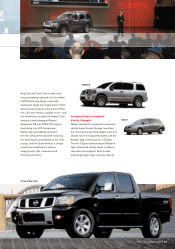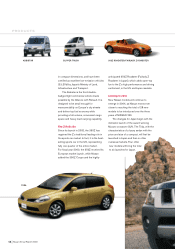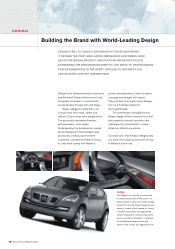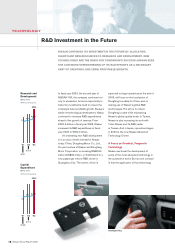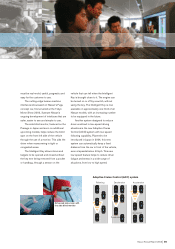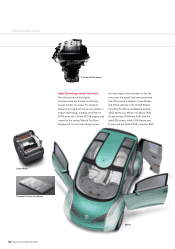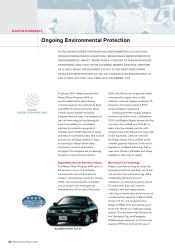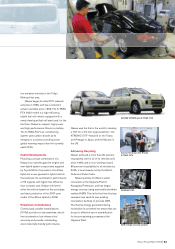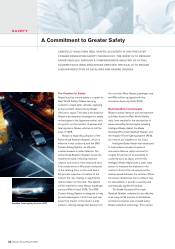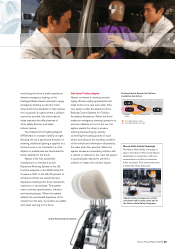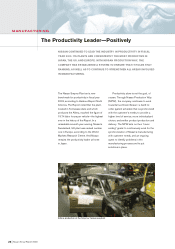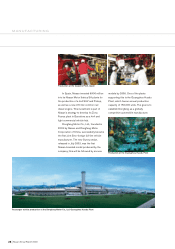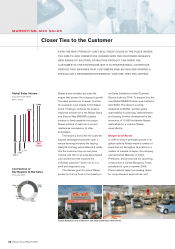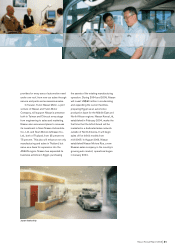Nissan 2004 Annual Report Download - page 25
Download and view the complete annual report
Please find page 25 of the 2004 Nissan annual report below. You can navigate through the pages in the report by either clicking on the pages listed below, or by using the keyword search tool below to find specific information within the annual report.
Nissan Annual Report 2003 23
low emission vehicles in the Tokyo
Metropolitan area.
Nissan began its initial FCV research
activities in 1996, and has conducted
actual road tests since 1999. The X-TRAIL
FCV 2003 model is a high-efficiency,
hybrid fuel cell vehicle equipped with a
newly developed fuel cell stack and, for the
first time, Nissan’s compact, high-power
and high-performance lithium-ion battery.
The X-TRAIL FCV’s air conditioning
system uses carbon dioxide as its
refrigerant, a solution providing lower
global warming impact than the currently
used CFCs.
Hybrid Developments
Featuring a unique combination of a
Nissan four-cylinder gasoline engine and
new hybrid system components supplied
by Toyota Motor Corporation, the Altima
Hybrid is a new-generation hybrid vehicle
that achieves the acceleration performance
of V6 engines with higher fuel efficiency
than compact cars. Nissan will further
refine the vehicle based on this prototype,
and start production of the 2007-year
model of the Altima Hybrid in 2006.
Powertrain Contributions
Continuously variable transmissions
(CVTs) provide not only seamless, shock-
free acceleration, but enhance fuel
economy and provide outstanding,
environmentally-friendly performance.
Nissan was the first in the world to develop
a CVT for a 3.5-liter engine platform—the
XTRONIC CVT—featured on the Teana
and Presage in Japan, and the Murano in
the US.
Advancing Recycling
Nissan achieved a more than 90-percent
recyclability rate for all of its vehicles sold
since 1999, and is now working toward
95-percent recyclability for all vehicles by
2005, a level already met by the March,
Cube and Cube Cubic.
Nissan partially modified a waste
incinerator at the Oppama Plant in
Kanagawa Prefecture, and has begun
energy recovery using automobile shredder
residue (ASR). This is the first time that any
carmaker has used its own existing
incineration facilities to process ASR.
The thermal energy generated during
incineration is converted into steam that can
be put to effective use in humidification
for the pre-painting processes at the
Oppama Plant.
XTRONIC CVT
Cosmo Oil leases the Nissan
X-TRAIL FCV
ASR energy recovery project
ALTIMA HYBRID and X-TRAIL FCV


